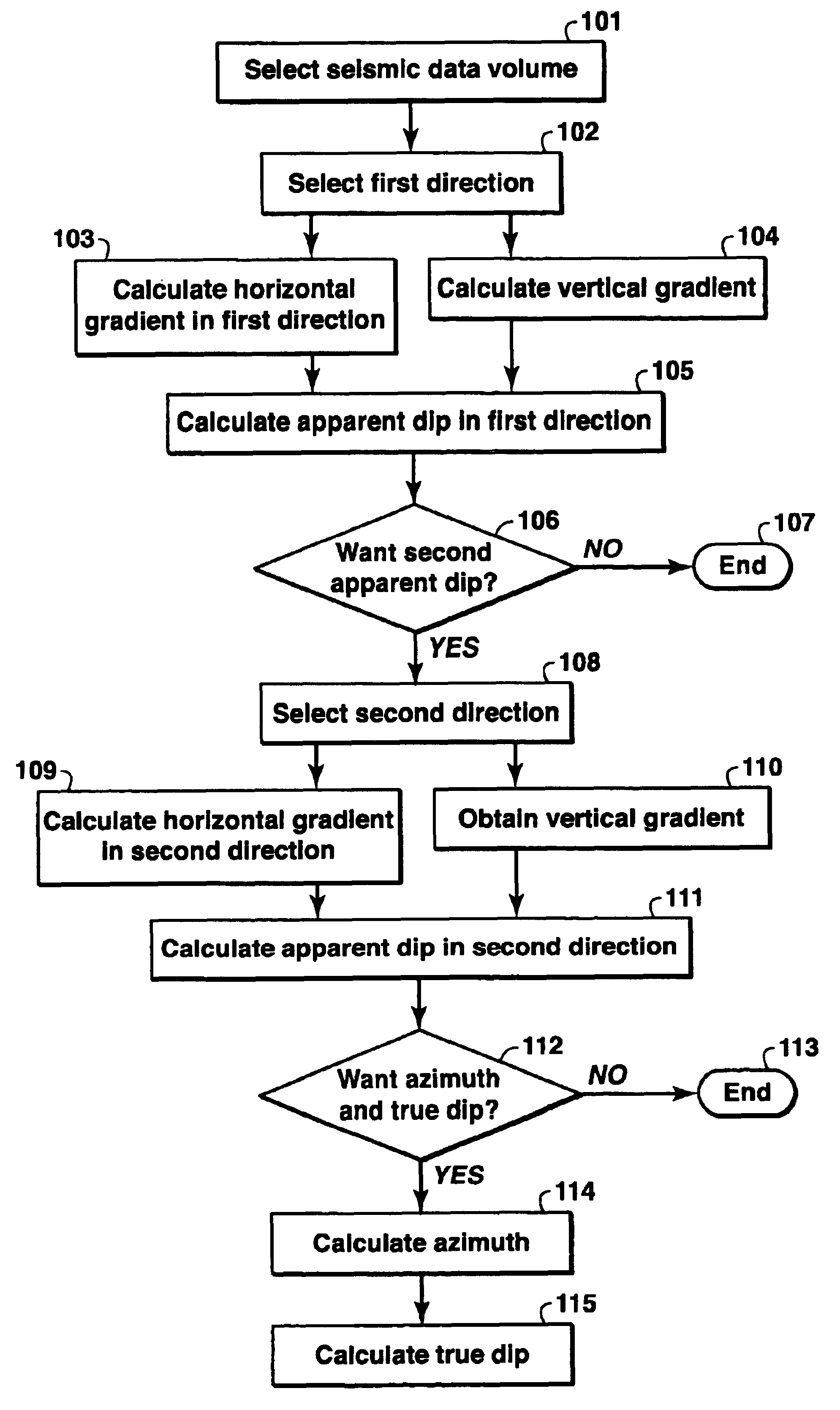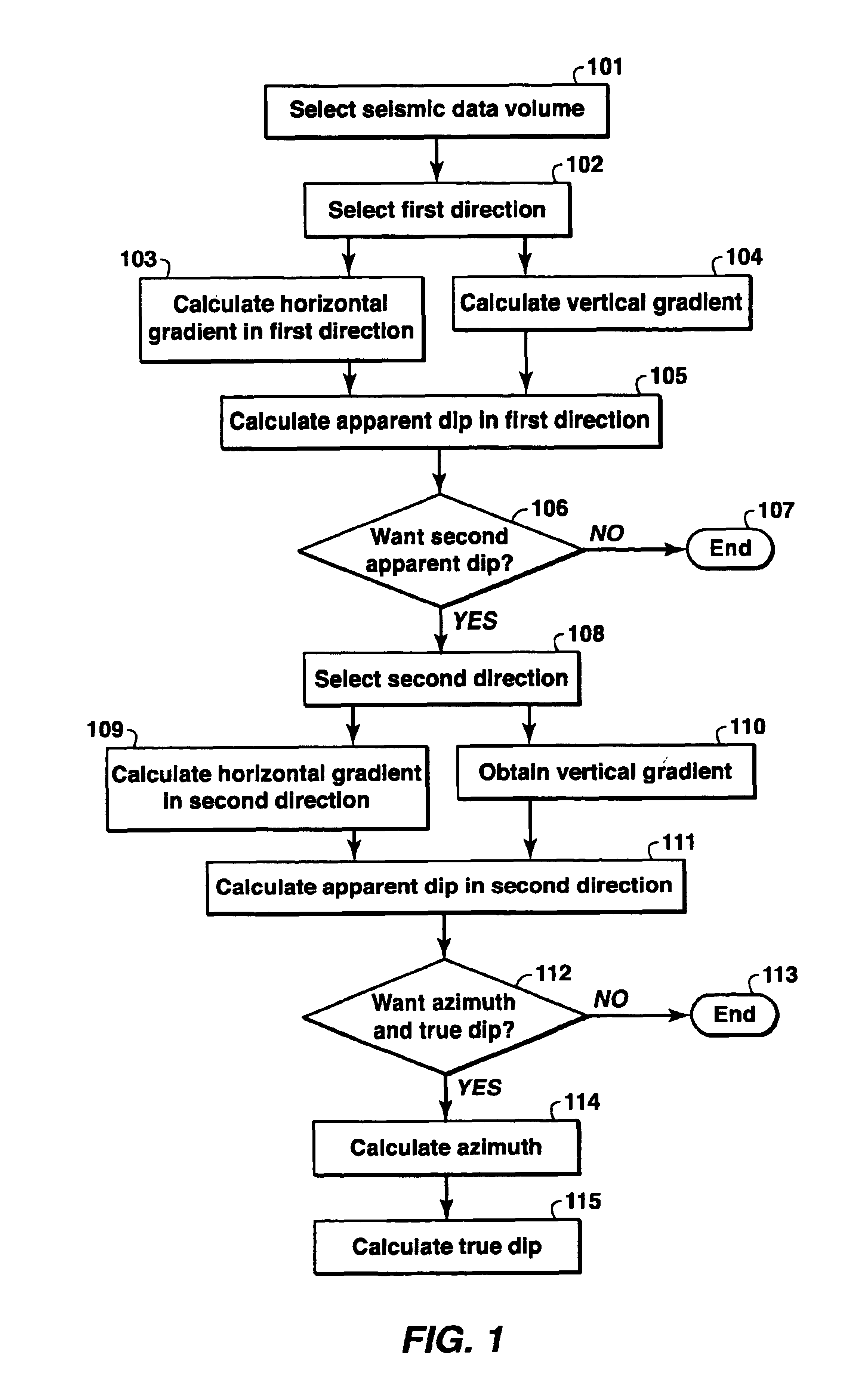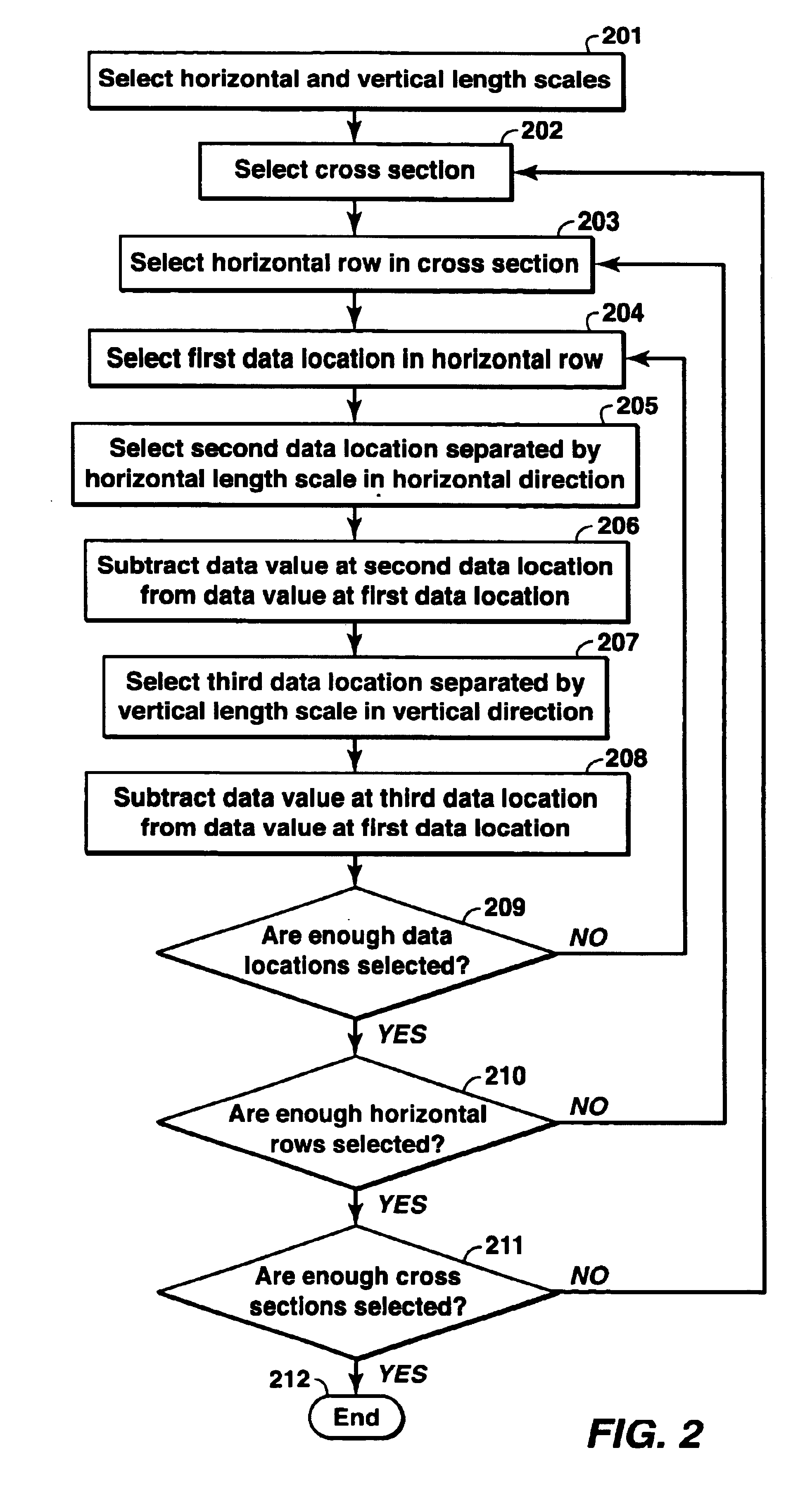Method for analyzing dip in seismic data volumes
a seismic data and volume analysis technology, applied in the field of seismic data processing, can solve the problems of prone to noise of cross-correlation algorithms, time-consuming, subjective, difficult process of manual delineation of seismic geometries in seismic data,
- Summary
- Abstract
- Description
- Claims
- Application Information
AI Technical Summary
Problems solved by technology
Method used
Image
Examples
Embodiment Construction
The invention is a method for analyzing dip in a volume of seismic data. Specifically, the invention is a method for the characterization of dips and azimuths of seismic reflectors within a volume of data for the quantitative estimation of structural and stratigraphic properties. The invention assists in the visualization, characterization, and automation of the mapping of features in seismic data. This invention improves the ability of geoscience interpreters to recognize and map seismic geometries and structural and dip domains in seismic attribute or seismic amplitude data, as part of the hydrocarbon exploration and production work process.
The invention takes a seismic data volume as input and can be used to generate either apparent dip volumes or true dip and azimuth volumes as output. The method of the invention is different from prior methods in that a gradient-based approach is used to calculate two orthogonal apparent dips. These apparent dips are assembled to produce true d...
PUM
 Login to View More
Login to View More Abstract
Description
Claims
Application Information
 Login to View More
Login to View More - R&D
- Intellectual Property
- Life Sciences
- Materials
- Tech Scout
- Unparalleled Data Quality
- Higher Quality Content
- 60% Fewer Hallucinations
Browse by: Latest US Patents, China's latest patents, Technical Efficacy Thesaurus, Application Domain, Technology Topic, Popular Technical Reports.
© 2025 PatSnap. All rights reserved.Legal|Privacy policy|Modern Slavery Act Transparency Statement|Sitemap|About US| Contact US: help@patsnap.com



